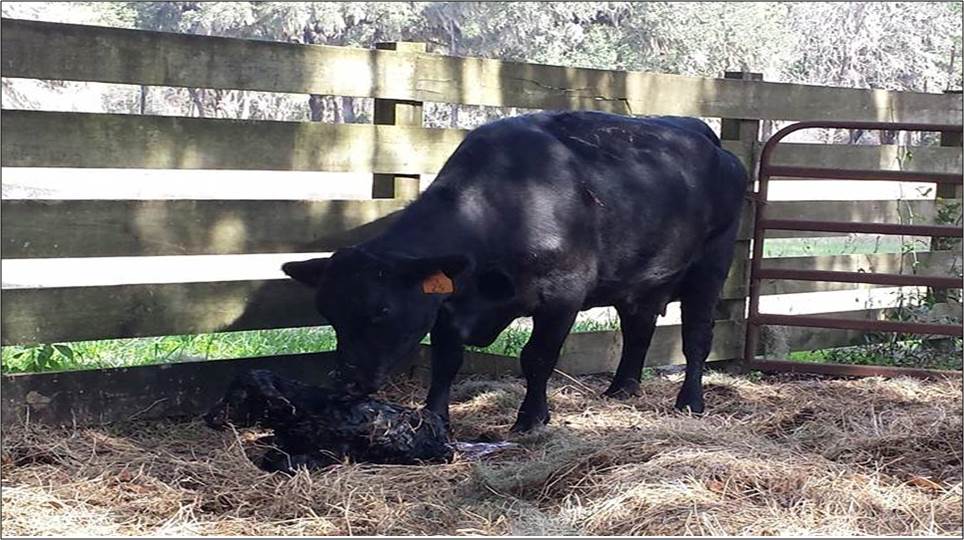
Start checking early bred cows and heifers early this fall. Research at Oklahoma State documents that hot summer temperatures shorten gestation by six days in early bred fall calving cows. Photo: Matt Hersom
Glenn Selk, Oklahoma State University Emeritus Extension Animal Scientist
Each year in August, it is time for an important reminder. Fall-calving season is here. In fact, the start of the fall calving season often begins before some producers expect it. The target date for the beginning of fall calving very often is September 1. Most printed gestation tables predict that calving will take place 283 days (some 285 days) after artificial insemination or natural breeding. Cows and heifers that gestate in hot weather will often calve a few days earlier than expected.
Oklahoma State University physiologists studied early fall (August) and late fall (October) calving cows. Data from two successive years were combined for 60 Angus X Hereford crossbred cows. The “early” and “late” fall calving cows had been artificially inseminated in early November or early January, respectively. Semen from the same sire was used for all cows. All cows were exposed to a single cleanup bull for 35 days at 4 days after the AI season. The weather prior to calving was significantly different for late pregnancy in the two groups. The average maximum temperature the week before calving was 93 degrees F. for the “early” fall group. The average maximum temperature the week before parturition in the “late” calving group was 66 degrees F. There was a 100% survival rate for calves in both groups and both groups of cows had very high re-breeding rates (90% and 92%, respectively).
The average gestation length for the “early” cows was 6 days shorter (279 days) as compared to the “late” cows (285 days) in year 1. The average gestation length for the “early” cows was 4 days shorter (278 days) as compared to the “late” cows (282 days) in year 2. Keep in mind that the gestation lengths listed are AVERAGE. This means that about half of the cows calved earlier than that. Records from millions of Holstein dairy cows across the entire United States report a similar pattern (Norman, et al.2009 J. Dairy Sci; 92:5). Holsteins bred in January and February (calving in October and November) averaged 2 days longer gestation than did Holstein cows bred in October (calving in July and August). Many of these would be in Northern climates with less heat stress and more moderate temperatures in the summer months. Here in the Southern Plains, late summer heat is more intense and persistent. Therefore, producers with early fall-calving cows should expect calves to start coming several days ahead of the “textbook gestation table” dates. They should begin their routine heifer and cow checks at least a week to 10 days ahead of the expected first calving date. Source: Kastner, Wettemann, and co-workers. 2004 OSU Animal Science Research Report
- Where Did That Weed Come From? The Importance of Weed Management Practices and Timings - December 5, 2025
- Sustainable U.S. Peanuts Kicks Off 2025 Crop Enrollment - December 5, 2025
- Grant Opportunity Available to Attend American Forage & Grassland Council Conference, Ashville – January 12-15 - December 5, 2025
